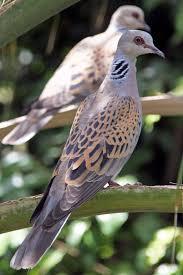The second day of Christmas is December 26 and as most carolers know, that’s the day a true love will give the gift of two Turtle Doves. This year a joint effort is being made between CEMEX in the UK, Spain and in France, along with BirdLife national partners, in a project to create much-needed nesting habitat along the Turtle Dove’s flyway, have achieved one better: three juvenile European Turtle Dove have been observed at CEMEX quarries in the UK this year.
Sadly, the Turtle Dove was up-listed to Vulnerable globally in 2015 on the IUCN Red List by BirdLife (the Red List authority for birds). Nationally, their UK population is currently halving in number every six years making the Turtle Dove the UK’s fastest declining bird.
Knowing that there is a very real chance the Turtle Dove could be lost from the UK in the near future, in 2014 CEMEX and the Royal Society for the Protection of Birds (RSPB, BirdLife in the UK) embarked on a 3-year pilot conservation project at CEMEX quarries in central England. This is supporting the work of Operation Turtle Dove – a partnership between the RSPB, Conservation Grade, Pensthorpe Conservation Trust, and Natural England. Together, they are identifying the primary causes of the decline, developing and delivering practical solutions for the species.
Now in the second year of the conservation project, CEMEX have sowed a special seed mix for the birds at a fifth UK quarry and are surveying a total of ten CEMEX quarries in the UK twice each breeding season using CEMEX staff and local volunteers. We are delighted to report that Turtle Doves have been found at two of these quarries, including three juveniles, so it is very likely that they were born on a CEMEX site this year. With support from RSPB’s conservation scientists, the intervention will be assessed to determine the effectiveness.
Rob Doody, CEMEX’s Director for Aggregate Operations, CEMEX UK said: “This project is so important in saving this iconic bird. It highlights the positive impact that we can make on the natural world. The balance between the natural and built environment is a delicate one which must be preserved not only for nature but future generations.”
